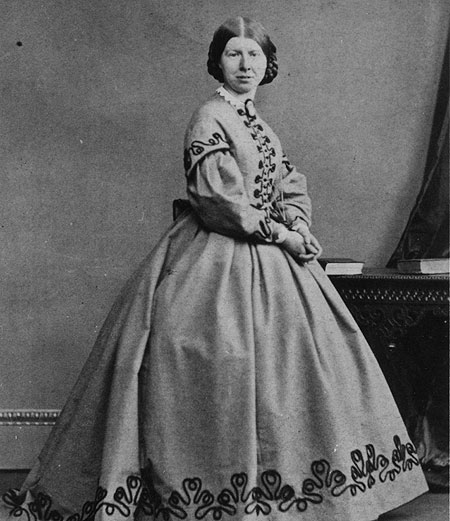
The minister of travel
Or how a (ex) Baptist Minister revolutionised the world of travel
The minister of travel
‘What an anxious question this annual holiday is now becoming! Everyone has been to Scotland, some of us had done the Land’s End… Scarbro’ is only suitable for invalids and children, the Lake District done years ago, and Fleetwood is worse than Scarbro’ — where shall we go next?’
It may not quite match Jane Austen’s famous opening to Pride and Prejudice “It is a truth universally acknowledged, that a single man in possession of a good fortune, must be in want of a wife” but to students of travel it perhaps should be as famous.
It is in fact the first line of Miss Jemima Morrell’s Swiss Journal, written in 1863, when she was one of the first party to Switzerland on the forerunner to a foreign package holiday organised by Thomas Cook.
Thomas Cook was a Baptist Minister who had become a cabinet maker and though he never planned it, he became a true travel revolutionary. 
On 9 June 1841 he was walking from his home in Market Harborough to the nearby town of Leicester to attend a temperance meeting. As he often did he was pondering the social problems of the age and how to his mind so many of them came down to alcohol. He later recalled, ‘the thought suddenly flashed across my mind as to the practicability of employing the great powers of railways and locomotion for the furtherance of this social reform’.
At the meeting, Thomas suggested that a special train be engaged to carry the temperance supporters of Leicester to a meeting in Loughborough some four weeks later. The proposal was greeted with enthusiasm, so on the following day, Thomas took his idea to the secretary of the Midland Railway Company. A train was duly arranged, and on 5 July 1841 nearly 500 passengers were carried in the then enormous distance of 12 miles and back for a shilling. The day was a great success.
During the subsequent three summers Thomas arranged trips between Leicester, Nottingham, Derby and Birmingham on behalf of local temperance societies and Sunday schools. It was a period of ‘enthusiastic philanthropy’ as other than the printing of posters and handbills, he had no financial interest in any of these early excursions.
All this was to change in the summer of 1845 when Thomas organised his first commercial venture – a trip to Liverpool. Tickets were 15 shillings for first-class passengers and 10 shillings for second. To publicise the journey and provide his customer with detailed information he decided to produce a handbook of the journey – a 60-page booklet that was a forerunner of the modern holiday brochure.
Thomas’ business grew and soon he was running trips to Wales, Scotland and Ireland and began to think about organising foreign trips to Europe and the Holy Land. A conversation with Sir Joseph Paxton, the architect of the Crystal Palace, put those plans on hold as Thomas agreed to focus bringing workers from Yorkshire and the Midlands to London for the Great Exhibition of 1851. By the end of the season Thomas had taken 150,000 people to London.
In 1855 an International Exhibition was held in Paris for the first time and Thomas thoughts returned to his plans for international travel. He tried to persuade the companies commanding the Channel traffic to allow him concessions but they refused to work with him.
Not one to give up he explored other options and identified the route between Harwich and Antwerp as a gateway to northern Europe. Thomas therefore planned a grand circular tour that would include Brussels, Cologne, the Rhine, Heidelberg, Baden-Baden, Strasbourg and Paris, finally returning to London via Le Havre or Dieppe and during the summer of 1855, Thomas escorted his first tourists to Europe.
 In June 1863 Thomas decided to expand his trips into Switzerland and it was on an initial tour, part guided holiday part information-gathering trip, amongst a party of more than 60 ladies and gentlemen was a Jemima Morrell. Those original diaries today sit available for anyone to see in the Thomas Cook Archives.
In June 1863 Thomas decided to expand his trips into Switzerland and it was on an initial tour, part guided holiday part information-gathering trip, amongst a party of more than 60 ladies and gentlemen was a Jemima Morrell. Those original diaries today sit available for anyone to see in the Thomas Cook Archives.
Thomas was soon organising further trips, including the first circular tours of Switzerland and subsequently his first Italian tours.
Thomas’s travellers to Switzerland and Italy were from the growing middle classes and they expected better accommodation than his earlier working-class customers had on their short journey across the Midlands. 
He started to negotiate with innkeepers and hotel owners for rooms and meals at good prices and he developed two revolutionary travel systems: one was the hotel coupon, launched in 1868, which travellers could use to pay for hotel accommodation and meals instead of using money; the other was his circular note, first issued in 1874 and a forerunner of the travellers cheque, which enabled tourists to obtain local currency in exchange for a paper note issued by Thomas Cook.
The picture below is a composite of four pictures of different panels from the Thomas Cook Building in Leicester, they depict the history of the brand and show the different excursions offered at different points in the brands’ history
